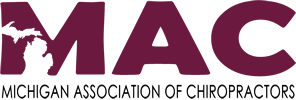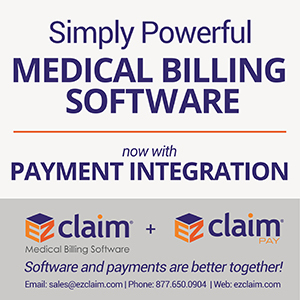Complete Story
09/19/2017
A Closer Look at Chiropractic and Michigan’s Medicaid System
With More Than 2 Million Michiganders on Medicaid, It Remains Critical That Chiropractic Services for Adult Beneficiaries Remain in DHHS Budget
Note: Chiropractic care for adult patients on Medicaid is currently funded in the Michigan Department of Health and Human Services (DHHS) budget for Fiscal Year 2018, which runs from October 1, 2017, through September 30, 2018.
The expansion of Medicaid under “Obamacare” – known as “Healthy Michigan” – has added more than 660,000 Michigan adults to the Medicaid rolls (as of July 2017), so it is critical that chiropractic care for adult patients in Medicaid remains covered in the DHHS budget. As a conservative, effective, and efficient health care delivery system, chiropractic has been proven to lower costs, as beneficiaries forego riskier, invasive treatments such as surgery and opioid painkillers, for their musculoskeletal conditions. This article discusses some of the issues regarding chiropractic in Michigan’s Medicaid system.
What is Medicaid?
Enacted in 1965 through amendments to the Social Security Act, Medicaid is a health and long-term care coverage program that is jointly financed by states and the federal government. Each state establishes and administers its own Medicaid program and determines the type, amount, duration, and scope of services covered within broad federal guidelines. States must cover certain mandatory benefits and may choose to provide other optional benefits.
Federal law also requires states to cover certain mandatory eligibility groups, including qualified parents, children, and pregnant women with low income, as well as older adults and people with disabilities with low income. States have the flexibility to cover other optional eligibility groups and set eligibility criteria within the federal standards.
The Children’s Health Insurance Program (CHIP) was created in 1997 through an amendment to the Social Security Act to provide health care coverage to low-income children not already eligible for Medicaid. Like Medicaid, CHIP is jointly financed by states and the federal government. States have the option of using CHIP funds to expand their existing Medicaid program, create a separate stand-alone CHIP, or do a combination of both.
Source: www.medicaid.gov
Covered Services
According to the Medicaid Provider Manual, which can be accessed online at http://www.mdch.state.mi.us/dch-medicaid/manuals/MedicaidProviderManual.pdf, Medicaid covers “medically necessary chiropractic services rendered by a chiropractor for the treatment of a diagnosed condition of subluxation of the spine.” The subluxation must be demonstrable on x-rays. Spinal manipulation is the only covered chiropractic procedure. Only one of the spinal manipulation procedure codes (98940, 98941, or 98942) is billable per day, per beneficiary. Clinical signs and symptoms must be consistent with the level of subluxation. If documentation other than x-rays supports the medical necessity of spinal manipulation for children, the x-ray requirement may be waived. Medicaid reserves the right to request x-ray documentation if deemed necessary. Medicaid reimburses up to 18 chiropractic visits per calendar year.
X-Ray Services
A chiropractor may order, and be reimbursed for, no more than one set of spinal x-rays per beneficiary, per year. If more than two procedures are provided for the beneficiary on the same date of service, the services must be combined and billed as one inclusive procedure code, such as the entire radiologic examination of the spine with survey study, anteroposterior and lateral.
Diagnosis Codes
Chiropractors must use at least one diagnosis code in conjunction with the procedure codes when billing chiropractic services. MDHHS follows the Medicare diagnosis coding requirements for chiropractic services.
Procedure Codes
Chiropractors must use at least one appropriate procedure code from the Current Procedural Terminology (CPT) and the Healthcare Common Procedure Coding System (HCPCS) coding manuals. A list of procedure codes covered by MDCH is maintained on the MDCH WEBSITE.
Beneficiary Copayment
A co-payment of $1 for each Medicaid reimbursable chiropractic visit may be required for beneficiaries age 21 years and older. When more than one reimbursable service is provided during one visit (e.g., spinal manipulation and x-ray on the same date of service [DOS]), only a single $1 co-payment may be charged to the beneficiary.
When billing Medicaid for the service, chiropractors should bill their usual and customary (U&C) charge (i.e., without any adjustment for the co-payment). Upon approval of the service, Michigan Department of Community Health (MDCH) automatically deducts the co-payment. If the chiropractor deducts the co-payment from the charge billed, an underpayment may result.
Refer to the Billing Beneficiaries Section of the General Information for Providers Chapter of the Medicaid Provider Manual for additional information regarding co-payment requirements. Beneficiaries may not be denied care or services based on inability to pay a co-payment, except as outlined in that section.


